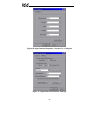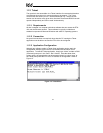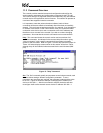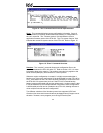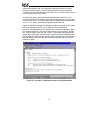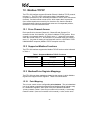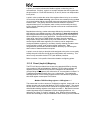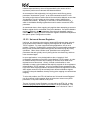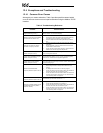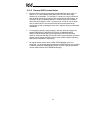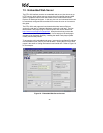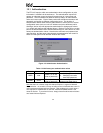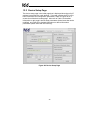
33
A point’s pn number indicates the Modbus register number the point is
accessed with. Similarly, a point’s sn number indicates the ASD register that
the point refers to. Each ASD channel (A, B, and C) has its own independent
list of points.
A point’s value contains the value of the register referred to by its sn number.
Via a service called data mirroring, point values are constantly being updated
via communication with the connected drives and maintained locally within the
interface itself. This greatly reduces the Ethernet network’s request-to-
response latency time, as requests (read or write) can be entirely serviced
locally, thereby eliminating the time required to execute an on-demand ASD
data transaction.
Besides data mirroring, another advantage afforded by the ability to map any
ASD register to any Modbus register is the capability of data reorganization.
Data reorganization allows the grouping of ASD registers into more logical or
efficient patterns to suit a given application. Because the Ethernet network
client never “sees” the true ASD register numbers, the point mapping
assignments can be determined by any user-defined criteria. For instance,
several disjoint ASD status registers (sn numbers) can be assigned to
contiguous Modbus registers (pn numbers), thereby allowing the status items
to be read with a single “read multiple register” transaction. Data
reorganization can therefore enhance network efficiency by minimizing the
total number of data transactions required.
A point’s name is simply a descriptive title assigned to the point to more easily
identify the point’s function during device configuration and monitoring. This
name is only accessible via the HTTP (web browser) interface.
Refer to section 13 for specific information related to configuring points.
12.3.2 Direct (Implicit) Mapping
The ETH-100 also provides direct access to the attached ASDs by allowing
circumvention of the point database. Modbus TCP/IP holding registers (04
registers) that are not
defined as points are mapped to the numerically
corresponding ASD registers (also referred to as “communication numbers” in
Toshiba documentation) with a direct 1-to-1 relationship. The relationship
between Modbus TCP/IP holding registers that are not defined as points and
their ASD register counterparts is as follows:
Modbus TCP/IP holding register = ASD register + 1
This means that in order to access a Toshiba drive register, simply add 1 to its
register number and access that Modbus TCP/IP holding register. The reason
for this offset is due to the fact that Toshiba drive registers begin at number 0,
while Modbus holding registers must begin at number 1. Because this access
method bypasses the point database’s explicit mapping definitions, it is
referred to as “direct” or “implicit” mapping. Also, because direct mapping
cannot take advantage of the point database’s data mirroring service, Ethernet




